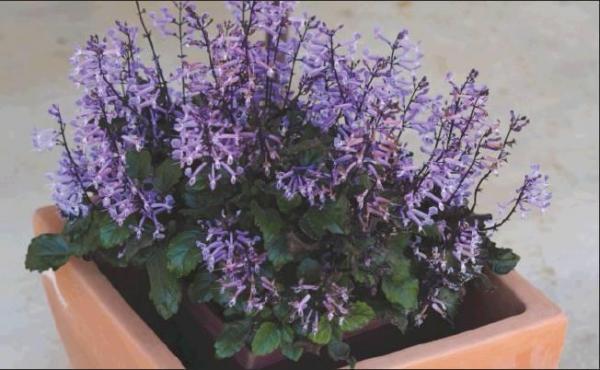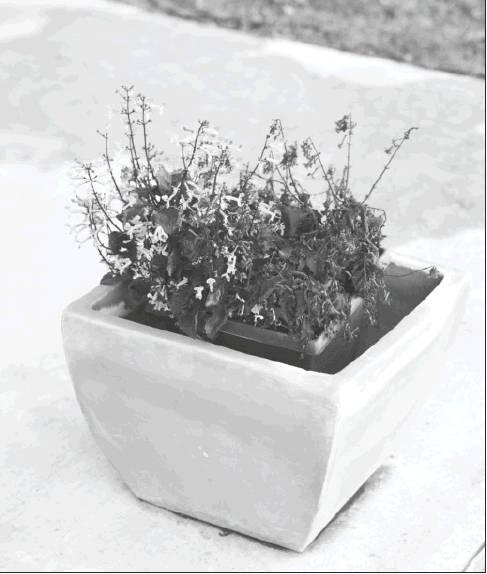Handling Cold Damage in Plants
What a strange Central Texas December this has been. It is the warmest I can remember, no snow like we had two years ago, very few below freezing nights, no icy winds, little rain let alone a freezing rain. Still as the year’s end nears all that could all change. Like I said, a very strange December.
But at some point, it will most likely get very cold and stay that way for a while. When that happens, my website will be flooded with emails asking, “How much cold will kill a plant?”
While the simple answer is “Not much,” the real answer is a bit more complicated. The cold tolerance of any plant is often determined by a number of factors, including the plant species or cultivar involved, the location and conditions under which the plant is grown, and the exact timing of weather extremes during the dormant period. Contrary to popular belief, plant damage is not generally caused by an unusually cold winter, be it wet or dry.
Low temperature injury is more often associated with extreme temperature fluctuation rather than with prolonged cold weather. Typically, temperatures falling below freezing will quickly damage or even kill many types of plants. However, with prompt care, many of these cold damaged plants can be rescued. Better still, protecting plants from freezing cold and frost before damage occurs is generally a good idea.
How much cold will kill a plant is not an easy question to answer. Be sure to look up the cold hardiness for the plant in question before leaving the plant outside when we are expecting really cold weather. Some plants can survive sub-freezing temperatures for months while others cannot take temperatures below 50 F. for more than a few hours.
The trick to plants surviving a cold winter is acclimation. Acclimation to temperatures much below freezing results from exposure to slowly falling temperatures and other factors. Plants that are dormant but not fully acclimated can be stressed or injured by a sudden, hard freeze. Rapid or extensive drops in temperature following mild autumn weather cause injury to woody plants. Extended periods of mild winter weather can de-acclimate plants, again making them vulnerable to injury from rapid temperature drops. So, we are better off when Mother Nature slowly takes our temperature down low and then, as spring approaches, slowly raises them back up again. But this is Texas. That just isn’t how it usually works here!
While many people ask how much cold will kill a plant, the real question should be how much freezing will kill a plant. Freeze damage to plant tissue can be detrimental to plants. Light frost typically doesn’t cause major damage, with exception to very tender plants, but hard frost freezes water in plant cells, causing dehydration and damage to cell walls. Cold injury is more likely to occur as the sun comes up. As a result of these damaged cell walls, the plant defrosts too quickly, killing leaves and stems.
Young trees or those with thin bark can also be affected by cold temperatures. Frost cracks, sometimes called radial shakes, appear as shallow to deep longitudinal cracks in the trunk of trees. They are most evident in winter at temperatures below 15°F so are not usually a concern for us but it can still happen. Frost cracks often, but not always, occur on the south or southwest sides of trees because this area experiences the greatest temperature fluctuations between day and night. A sudden drop in temperature causes the outer layer of wood to contract more rapidly than the inner layer, which results in a long vertical crack at weak points in the trunk. Once a frost crack occurs on a tree, it is likely to appear annually. While not always visible until spring, frost crack results from sudden drops in nighttime temperature following the daytime heating from the sun (now that sounds like Texas!). Unless these cracks are ragged or torn, however, they usually heal themselves over time. Frost crack damage in trees that require repair can usually be saved by carefully cutting away the torn or loose bark. Smoothing out the edges with a knife will allow the tree to form a callous on its own.
Unless damaged plants are moved indoors or another sheltered area, do not attempt to prune damaged leaves or stems. This actually offers additional protection should another cold spell occur. Instead, wait until spring to cut away the damaged areas. Prune dead stems all the way back. Live stems, however, need only the damaged areas cut back, as these will eventually regrow once warm temperatures return. For soft-stemmed plants suffering from cold injury, immediate pruning may be necessary, as their stems are more prone to rotting. Cold damaged plants can be watered and given a boost of liquid fertilizer to help aid in their recovery.
While saving frozen plants is possible, freeze damage to plant tissue and other cold injuries can often be prevented. When frost or freezing conditions are expected, you can protect tender plants by covering them with sheets or burlap sacks. These should be removed once the sun returns the following morning.
It always helps to understand how plants react to frost and freeze. Tropical and frost-tender plants are unable to survive freezing temperatures - they can only grow naturally in warm environments and climates – so a blast of cold like we have seen could really hurt them. Annual plants cannot survive a freeze either. But they disperse seeds to regain their numbers when warm weather arrives. The foliage of root-hardy perennials is killed off by frosty weather, but the roots survive by lying dormant until the following spring. While Trees, shrubs and full hardy perennials enter a dormant state entirely, lessening their vulnerability to icy temperatures by decreasing their content of sap and conserving water.
Want to weather our winter? It is not too hard to do. Use mulch to conserve soil moisture and insulate the roots from cold temperatures. Plants in containers that are sensitive to frost should be taken indoors throughout a cold spell. Cover any tender sprouts in your winter garden. (You can do this with an upside-down bucket or flowerpot, or with a helping of mulch.) When the temperature rises back above freezing, take off any covers to allow for sunlight. Old bed sheets, burlap, commercial frost cloths or fabric should be used to cover larger plants. Aim to drape covers over a trellis or a frame to stop it from directly touching the foliage. Any fabric covers help trap heat from soil, so you should strive to secure covers right to the ground, perhaps using a brick around the edges as a weight so the cover doesn’t get blown away by wind.
Finally, if a freeze is on the way, be sure to water your plants thoroughly, adding insulating water to plant cells and soil will stop plants from drying out or freezing. Always remember to take off any cover in the morning when the temperatures rise, and you and your plants will be able to weather our winter!




